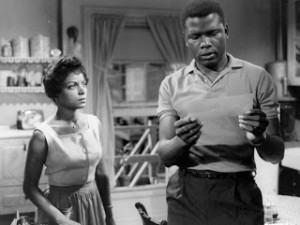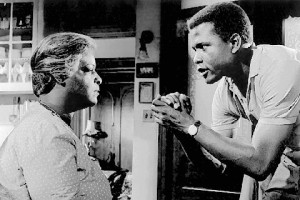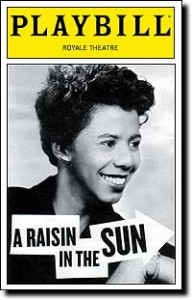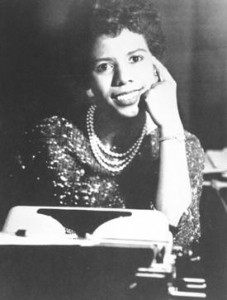In 1959, just on the eve of the Civil Rights Movement in American, Lorraine Hansberry saw the history-making premiere of her drama A Raisin in the Sun on Broadway. A Raisin in the Sun, which was based on Hansberry and her family’s own experiences, offered audiences a stellar cast that included Sidney Poitier and Ruby Dee. It was a play that no one wanted to produce. At least at first that was the case. Yet, with its second major Broadway revival in ten years, A Raisin in the Sun is considered to be an American classic. Its poignant honesty, three-dimensional characters, and solid structure help make it a powerful drama even long past the era in which it is set.
Late 1950s Chicago
Producers were afraid to back a play in which most of the cast was black and during which we watched a minority family struggle to attain their dreams while living in a racist society. A Raisin in the Sun offered a very dim view of whites as racist in sometimes subtle and deviously kind ways. And to top is off it was not set in the South, where one might expect racism to be commonplace, but on the South Side of Chicago in the late 1950s. Would a largely middle- to- upper class white audience really want to see such a show on Broadway?
It took producer Phillip Rose over a year to raise the money to produce A Raisin in the Sun. He enlisted producer David J. Cogan and the show went into production. The play premiered on Broadway on March 11, 1959 to the surprise of Rose and Hansberry, it garnered reviews. Then night before opening the audience gave A Raisin in the Sun a cool reception and producer and playwright expected the same from reviewers.
Tony Nominations and More
The play earned four Tony nominations, including Best Play for Hansberry and producers Rose and Cogan, Best Actor for Sidney Poitier (Walter Younger), Best Actress for Claudia McNeil (Lena Younger, Mama), and Best Direction for Lloyd Richards. Hansberry was the first black playwright to have a play on Broadway and Richards was the first black director on Broadway. The drama received the New York Drama Critic’s Award for Best Play. She was the youngest playwright and at that time only the fifth woman to receive the award. A Raisin in the Sun ran for almost two years before going on a successful national tour.
The film was produced in 1961 with the original cast and In 1973, the musical adaptation of the play won the Tony for Best Musical. It received nine nominations and won two Tonys. The play was successfully revived on Broadway in 2004 with Sean Combs and Audra McDonald and that production was adapted into a popular film for television in 2008.
Hansberry’s Untimely Death
In 1959, Lorraine Hansberry became one of the most promising playwrights in America. She was 29 years old. In five short years, she would die of pancreatic cancer. The end came on January 11, 1964. Hansberry created various other writings, including books and short stories. Her only other play to be produced on Broadway, which was entitled The Sign in Sidney Brustein’s Window, received a tempered reception. It ran for 101 performances, closing the night before she died.
Her Legacy
In 1983, theatre reviewer Frank Rich wrote in the New York Times that Lorraine Hansberry’s play A Raisin in the Sun “changed American Theatre forever.” She not only made people think and feel but she also made them realize through the Younger family that black characters could indeed be written in a manner that made them as real as someone like Willie Loman or Tom Wingfield. Hansberry’s A Raisin in the Sun signaled that the times they were indeed changing in America. As director Richards would note, it was the first drama to also draw blacks to the Broadway theatre. More than 50 years after its premiere, A Raisin in the Sun is considered to be an American classic.





